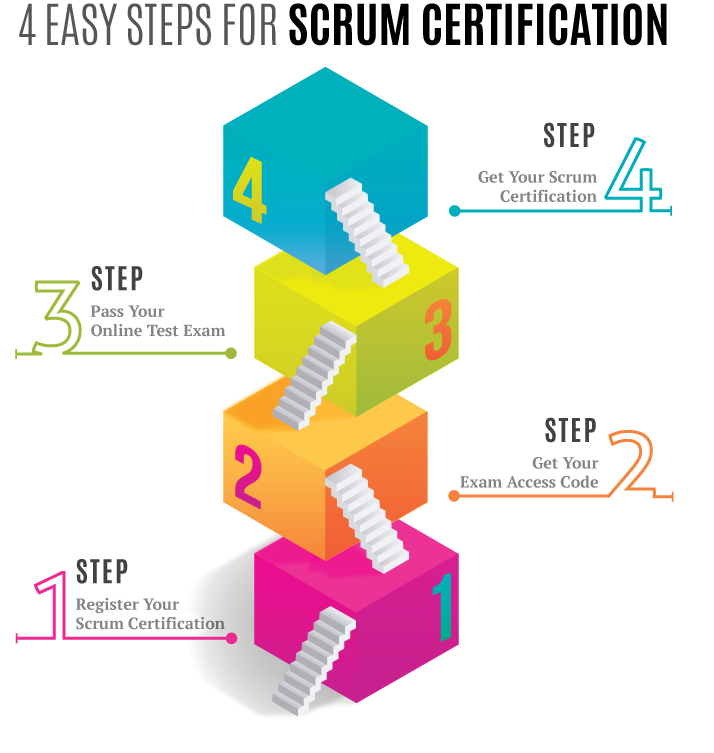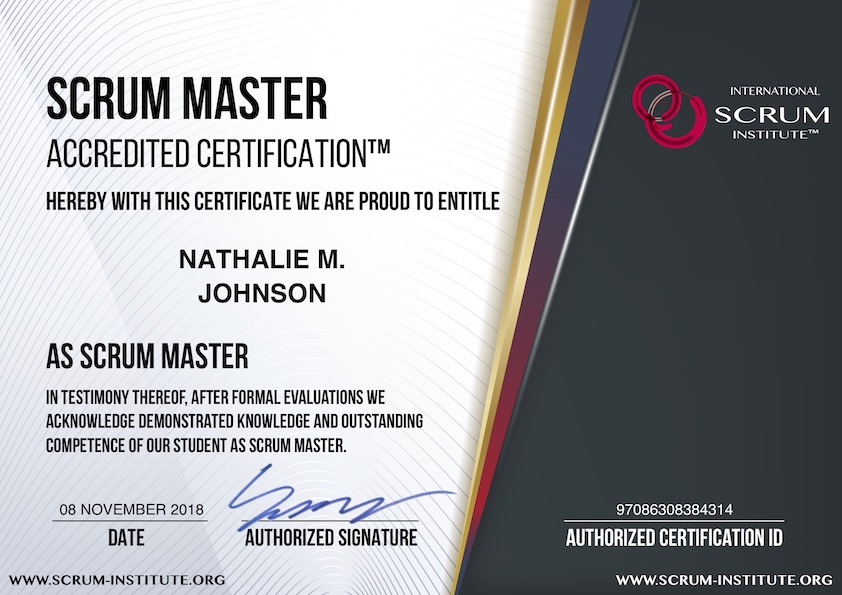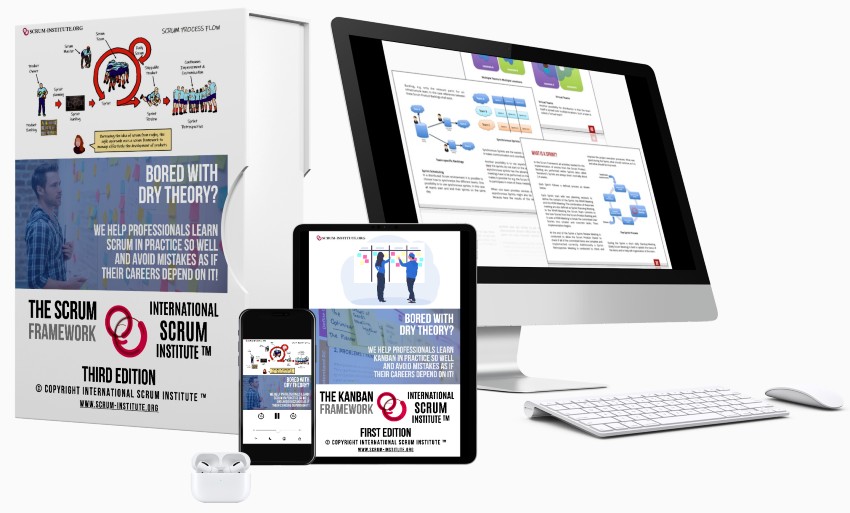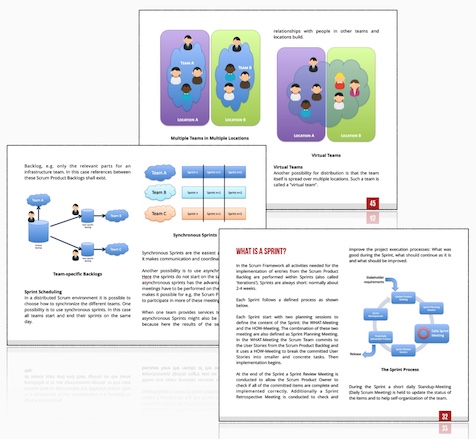Scrum Planning Poker: Best Estimation Method for Agile Teams
Harness the power of collective wisdom to improve your project estimations using Scrum Planning Poker. As we sail into 21st century, Agile methods continue to dominate the scene in software development and project management. Led by innovators like Mike Cohn, the Agile methodology has contributed valuable tools to the development landscape. A standout tool of this framework is none other than Planning Poker. An effective estimation technique that can refine your Scrum team's estimation abilities, it employs the use of story points to assess items in the product backlog, improving the accuracy of feature development estimates.
This blog post will provide a comprehensive tour through the game of Scrum Planning Poker, explaining how this consensus-based exercise, also known as scrum poker, can replace guesswork with strategic planning, boosting accuracy and minimizing discrepancies during the sprint planning phase. As we dive in, you'll be encouraged to consider questions relevant to your project, and see how the perspectives of all participants can lend refinement to your team's shared understanding of efforts required for each item on the backlog.
Definition: Scrum planning poker is a technique used in agile project management to estimate the effort required for completing user stories. It involves team members, including the product owner, developers, and testers, coming together to assign story points using special cards called planning poker cards. Each team member simultaneously selects a card that represents their estimate, followed by a discussion to reach a consensus on the final estimate. This collaborative approach helps ensure more accurate estimations and facilitates effective planning and prioritization of tasks, or items, in Scrum projects.
Understanding Scrum Planning Poker
Agile project management has gained increasing popularity over the years, and with it, there are as many estimation techniques as there are Agile frameworks. One such technique that's gaining traction, largely attributed to Mike Cohn and his introduction of scrum poker, is Scrum Planning Poker.
Imagine you're in a room with several team members, including developers, QA engineers, product owners, and stakeholders. You have a backlog of user stories that require efforts to implement, which are your product backlog items. However, different participants may perceive different levels of complexity for the same feature, leading to inaccurate estimates and subsequently delaying project delivery.
Scrum Planning Poker is a workshop technique used to estimate the effort required to complete each product backlog item or user story. It involves a team coming together to assign story points, ensuring everyone's viewpoints and any questions they may have are addressed.
The process is facilitated by using special cards called planning poker cards. Each card has a number representing different levels of effort. The team members simultaneously select a card that represents their estimate without revealing their choice until everyone has chosen.
Once everyone reveals their cards, all participants discuss and come to a consensus on the final estimate. The idea is that this approach helps generate more accurate results than having a single person make an estimate or relying on subjective judgment.
Now that we understand what Scrum Planning Poker entails let’s study its origin and principles.
Origin and Principles
Planning poker has its roots in an estimation method (See more about Scrum Effort Estimation) called Wideband Delphi developed by the RAND Corporation in the 1940s. The original Delphi method involved presenting independent experts with questionnaires and seeking feedback through iterative rounds until arriving at a consensus estimate.
Planning poker, as properties by Mike Cohn, incorporates some of these ideas but focuses more on collective decision-making among all participants rather than relying only on expert opinion. Furthermore, James Grenning contributed to the development of Planning Poker as part of the Agile community. He, along with Mike Cohn, Alistair Cockburn, and others, is known for his involvement in the creation and popularization of Planning Poker as an agile estimation technique. James Grenning has been an active figure in the agile and software development communities, and his contributions, along with those of others, have played a role in shaping agile practices, including the use of techniques like Planning Poker for effective team collaboration and estimation in Scrum and other agile methodologies.
 Scrum Planning Poker
Scrum Planning Poker
The core principles behind Scrum Planning Poker are collaboration, accuracy, accountability, and transparency. By bringing all team members' perspectives into play when estimating tasks or stories, collaboration enhances a greater understanding of dependencies and potential risks involved in a task. In this way, any questions around the complexity of the features in the product backlog can effectively be cleared, leading to more precise project estimates.Furthermore, Scrum Planning Poker helps create accountability and build trust among teammates, including different roles like the scrum master and the customer-facing individuals. By allowing individual choices before revealing them simultaneously, it reduces biases and ensures everyone is on the same page also regarding the Jira-logged tasks. The discussion involved in reaching a consensus adds transparency to the estimation process, a feature many organizations commend.
It's like a group project where every member, from the customer representatives to the scrum master, has a unique skill set, opinions, and experience. The group uses these varied perspectives to review and assign story points, make a better judgment of completing the project compared to relying on just the estimators input.
We now understand the basics of Scrum planning poker, including the different roles played by people in organizations and how it originated. For a deeper dive into all its aspects, look into our FAQ. So let's move onto the implementation process in the next section.
Scrum Planning Poker is a technique used in Agile project management to estimate the complexity or effort required for each unit of work. It helps team members to collaborate efficiently, eliminates potential biases, and sustains transparency throughout the life of the project. For the scrum master to execute Scrum Planning Poker successfully, every member needs to be on the same page and understand the procedure.
Implementing Scrum Planning Poker
Let's say you are working with your team on implementing critical software updates required by clients. As a scrum master, understanding the roles, responsibilities, and expertise of your team members is crucial. Setting a realistic timeline for each unit of work is essential; otherwise, it could affect overall project timelines and stress the team members. With Scrum Planning Poker, each team member evaluates these units' complexity or effort in relative terms by scoring them from 1-100 using special cards.
However, how do you set up the deck of cards? Or in other words, how does a scrum master coordinate this card-based system on Jira?
To implement Scrum Planning Poker effectively, the first step for the scrum master is to set up a standard deck of cards. This deck should contain numbers representing different values that range from 0 through 100 and designated for specific purposes.
- According to the 14th State of Agile report, around 58% of respondents said they use scrum methodology in their projects, which typically involves practices like planning poker.
- A study published in the Journal of Systems and Software found that using techniques like planning poker can improve estimation accuracy by up to 40%.
- Research in Journal of Computer Science and Technology (JCST) highlighted that over 84% of agile teams confirmed the utilization of Planning Poker to estimate story points, ensuring team members' engagement and understanding of tasks' complexity.
Setting the Deck of Cards and Consensus Number (Story Points)
Each value represents a level of effort or complexity associated with an individual story-point. The higher the number, the more complex or valuable the unit of work. However, it is essential to note that the cards' value may vary depending on the project's complexity and skill sets available within the team.
| Card | Value | Purpose |
|---|
| 0 | 0 | No complexity |
| 1 | 1 | Minimal complexity |
| 2 | 2 | Minimal complexity plus some unknowns |
| 3 | 4 | Low complexity |
| 5 | 8 | Medium-low complexity |
| 8 | 16 | Medium complexity |
| 13 | 32 | High complexity |
| 20 | 64 | Very high complexity |
| 40 | - | Extremely high Complexities |
| 100 | - | Maximum possible Complexities |
Suppose a developer with several years of experience scores a particular task more beneficial than another person without such vast knowledge/experience in the matter. In that case, it may lead to bias or inaccurate estimation. Therefore, it's crucial to discuss and debate before arriving at a final estimate.
It is also essential to include blank cards for scenarios where there isn't an appropriate scorecard present. These should not be used as standard estimating points but can serve as a stopping point to ask questions, like adding a feature or clarifying a requirement.
Setting up the deck of cards is easy and straightforward despite the variety in roles. The team members can get their decks from multiple sources ranging from premade playing cards to online decks customized for Agile teams. Some physical Scrum Planning Poker cards also include complex values like double zero, infinity, question marks for uncertain tasks.
Remember: The focus in planning poker is on collaboration and healthy discussion among team members of all roles in the organization to achieve fair and accurate estimation of work requirements rather than just completing estimates quickly.
Now that we understand how to set up the deck of cards necessary for Scrum Planning Poker, let us move on to engaging in poker sessions. These interactions are crucial for the customer-centered success of organizations.
One of the primary reasons that Scrum planning poker is so effective is that it involves team members coming together to discuss and assign story points. This cooperative effort ensures that the entire team, including the scrum master and customer-adjacent roles, have a clear and holistic understanding of the project's complexity and needs, ultimately contributing to the health and efficiency of organizations.To be effective, engagement is necessary during the planning poker sessions, which are critical meetings in the agenda of product managers. One of their key responsibilities as facilitators during these meetings is ensuring that every team member actively participates to ensure the most accurate estimate possible. This participation can take many forms; for example, team members should discuss their chosen card and why they chose it. If any team member's estimates differ significantly from others in comparison, they should justify their reasoning, question assumptions or propose alternative explanations.
Planning Poker® / Scrum Poker
One commonly used method during the estimation process is to play Planning Poker® (also called Scrum Poker). When using Planning Poker®, influence between the participants is minimized and therefore a more accurate estimation result is produced.
In order to play Planning Poker®, the following is needed:
- The list of features to be estimated.
- Decks of numbered cards.
A typical deck has cards showing the Fibonacci sequence, including zero: 0, 1, 2, 3, 5, 8, 13, 21, 34, 55, 89; other similar progressions are also possible. The reason for using the Fibonacci sequence is to reflect the uncertainty in estimating larger items. A high estimate usually means that the story is not well understood in detail or should be broken down into multiple smaller stories. Smaller stories can be estimated in greater detail. It would be a waste of time to discuss if it is 19, 20 or 25; the story is simply (too) big.
The game is then played in the following steps:
- The Scrum Product Owner presents the story to be estimated. The Scrum Team asks questions and the Scrum Product Owner explains in more detail. If many stories have to be estimated a time-constraint (e.g. only one minute for explanation) might be set as well. If the time-constraint is reached and the Scrum Team does not understand the story, it is a sign that the story has to be re-written.
- Each member of the Scrum Team privately chooses the card representing the estimation.
- After everyone has chosen a card, all selections are revealed.
- People with high and low estimates are allowed to explain their estimate.
- Estimation starts again until a consent is found.
- This game is repeated until all stories are estimated.
The Scrum Framework itself does not prescribe a single way for the Scrum Teams to estimate their work. However, within the Scrum Framework the estimation is not normally done in terms of time - a more abstracted metric to quantify effort is used. Common estimating methods include numeric sizing (1 through 10), t-shirt sizes (XS, S, M, L, XL, XXL, XXXL) or the Fibonacci sequence (1, 2, 3, 5, 8, 13, 21, 34, etc.).
It is important that the team shares a common understanding of the scale it uses, so that every member of the team is comfortable with it.
All the entries within the Scrum Product Backlog have to be estimated to allow the Scrum Product Owner to prioritize the entries and to plan releases. This means that the Scrum Product Owner needs an honest assessment of how difficult the work will be. Nevertheless, it is recommended that the Scrum Product Owner does not attend the estimation to avoid pressuring (intentionally or otherwise) the Scrum Team.
Planning Poker® is a registered trademark of Mountain Goat Software, LLC.
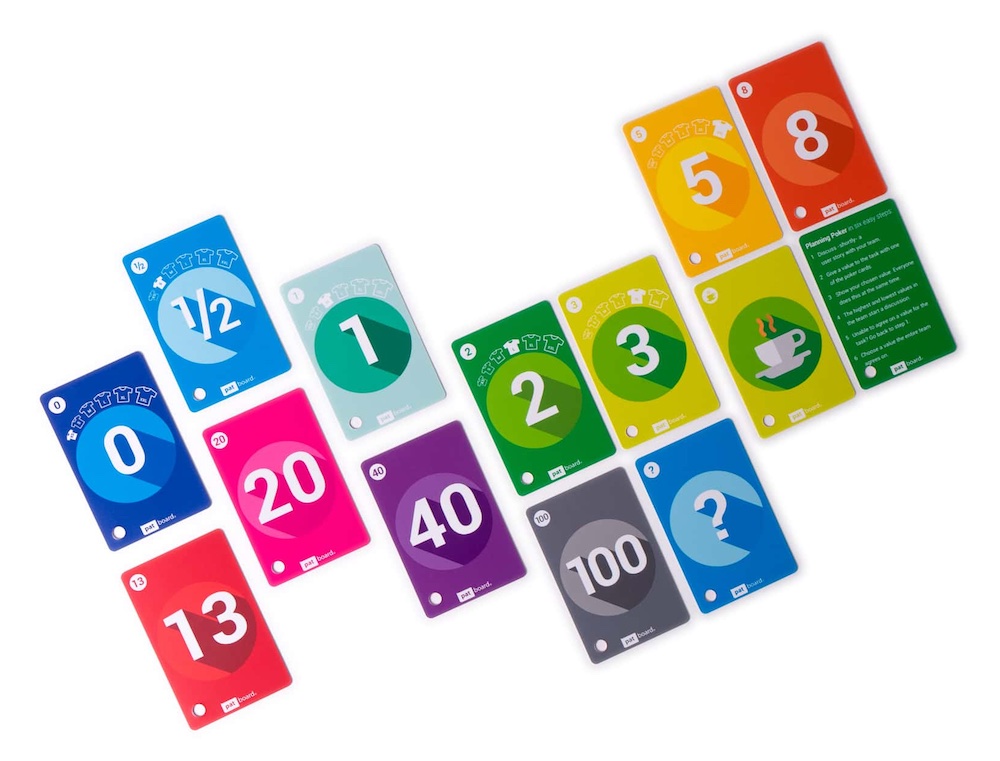 Planning Poker
Planning Poker
Engaging in Planning Poker Sessions Estimates
Here's an example: if a developer chooses a '5' while another selects a '3' for some user story in a poker planning session, this may indicate that both members have different ideas about how difficult or complex achieving this story will be. It could also suggest differences in experience levels within team members in the organization.
In such cases, instead of picking sides, the facilitator can encourage an agreement by playing a decisive role by encouraging everyone´s contributions to inspire thoughtful discussion that aims at achieving consensus. Having discussions like these in such meetings contribute greatly to being able to get accurate estimates and ultimately deliver high-quality products within the given timelines.
The technique has several benefits beyond its primary purpose of providing estimations. One of the key benefits of Scrum planning poker is that it encourages collaboration amongst team members and promotes better communication during their meetings.
The use of Scrum planning poker, where team members discuss and assign story points, is highly effective in achieving accurate estimates. Active engagement and participation from every team member is crucial during these sessions. This includes discussing chosen cards, justifying reasoning, questioning assumptions, and proposing alternative explanations. If estimates differ significantly, facilitators should encourage thoughtful discussion to reach a consensus rather than picking sides. These discussions contribute to accurate estimates and the delivery of high-quality products within timelines.
The Impact of Scrum Planning Poker
It encourages transparency by enabling all stakeholders to see the rationale behind each estimate raised and challenge those with different views in a respectful dialogue until they arrive at a collective understanding or consensus towards more accurate estimates during a meeting.
Another advantage of using this technique is that it factors in individual opinions and assigns comparative weights to each one, thus decreasing biases. Cognitive psychology proves that when doing group estimates like estimating in planning poker, people tend towards "anchoring bias," which appears when the first number proposed becomes an anchor for subsequent evaluation. The use of cards with hidden results helps counteract this bias as everyone is obliged to express their opinion to prevent the influence of such tendencies.
Additionally, it ensures that every team member gets an equal chance to voice their opinions and justifications and preventing a few people from controlling the entire process in what has become an essential part of the organization's planning estimated meetings.
Planning poker is like assembling a puzzle with colleagues where each one of them contributes a piece until all pieces are put together. The outcome of everyone putting in their pieces and forming the final picture makes for a comprehensive and ultimately more accurate result - a tangible agreement achieved in these poker planning sessions.
Having explored how engaging in poker sessions as a key component of meetings can lead to successful estimates while understanding the impact of Scrum planning poker on communication and biases, let's delve into some practical tips for efficient planning poker sessions.
As mentioned earlier, planning poker sessions can be a crucial part of agile project management. However, to ensure these sessions are efficient and productive, consider the following practical tips.
Practical Tips for Efficient Planning Poker Estimate Sessions for Your Team
Set a clear agenda: Establishing an outline for each planning poker session, or meeting, will help keep discussions on track. The product owner or product managers should prepare user stories in advance and list them in priority order. This way, the team can focus on estimating the most important stories first, rather than getting sidetracked by lower priority tasks. Their role as facilitators becomes more effective and transparent in these poker planning meetings when they help the team stay focused on the goal, thereby contributing to the organization's overall effectiveness.Choose appropriate card decks: The standard Fibonacci sequence is a popular choice, but teams can create custom decks to suit their specific needs. Consider factors like project complexity, team size, and expertise when selecting card values. Mountain Goat Software, for instance, provides a range of cards designed for varied business environments, spanning from startups to manufacturing corporations.
- Encourage participation from everyone: All team members - including developers, testers and even the product manager - should be involved in planning poker sessions since each estimator brings a unique perspective to story estimation. Furthermore, involving everyone will also make team members feel valued, improve transparency and accountability throughout the business process.
- Avoid discussion time limits: To ensure that all aspects of user stories are thoroughly considered during estimation, it's essential to have open discussions. There may be technical constraints or dependencies that won't ultimately allow the story to fit into the current sprint easily. Ensuring all perspectives are heard not only builds confidence among team members but also leads to better accuracy in estimates and their corresponding figures.
- Set realistic expectations: It's easy to get caught up estimating stories precisely by giving more weight to minor details rather than focusing solely on the overall effort required. Keep reminding everyone about the reason behind having complex estimation method which is that no one could ever be 100% accurate in predicting the future. In this sense, it's important to understand that the figures arrived at are estimates and not certainties, fostering a culture of understanding and confidence.
- Document decisions: Ensure everything decided upon during planning poker sessions is documented and saved for future reference if needed. In addition, capturing the prominent reasons and insights behind each estimate can provide valuable context that helps streamline subsequent planning sprints. The figures derived serve not just as mere estimates, but also as records of each estimator's thought process, hence should be preserved carefully.
- Encourage Collaboration and Teamwork: Planning poker sessions are a collaborative effort, and stakeholders must focus on group consensus instead of individual estimates. Using techniques such as setting the right agenda, appropriate card decks, involving everyone, avoiding discussion time limits, setting realistic expectations, and documenting decisions will ensure more accurate estimates. So give it a try and see how much more efficient your estimation process can get under the stewardship of a dedicated product manager!
- Planning Poket Tips from the Source: Some best practices for effectively using Scrum Planning Poker recommended by Mountain Goat Software include ensuring all team members are actively involved in the estimation process, providing clear and concise user stories, setting a time limit for each round of estimation, and discussing any significant differences between estimates to foster collaboration and shared understanding. A study by Fernandez et al. found that teams who used Planning Poker achieved more accurate estimates compared to other estimation techniques.
The benefits of using Scrum Planning Poker in project management include improved accuracy and consistency in estimations, increased team collaboration and communication, and enhanced transparency and accountability. According to a survey by the Agile Alliance, teams using Scrum Planning Poker have achieved a 20% increase in estimation accuracy and a 15% reduction in project delays. Additionally, the technique promotes shared understanding among team members, leading to more accurate estimations and better decision-making throughout the product and business project lifecycle.
FAQ for how teams estimate via planning poker
Are there any best practices or tips for effectively using scrum planning poker?
Answer: Yes, while Scrum planning poker is a widely accepted estimation method, Mountain Goat Software suggests that there are alternative methods to consider based on your team's unique requirements and business circumstances.
What are the benefits of using scrum planning poker in project management?
Answer: The benefits of using Scrum Planning Poker in project management include improved accuracy and consistency in estimations, increased team collaboration and communication, and enhanced transparency and accountability. According to a survey by the Agile Alliance, teams using Scrum Planning Poker have achieved a 20% increase in estimation accuracy and a 15% reduction in project delays. Additionally, the technique promotes shared understanding among team members, leading to more accurate estimations and better decision-making throughout the project lifecycle.
Are there any alternative methods to scrum planning poker?
Answer: Yes, there are alternative methods to Scrum planning poker. Some teams use the T-shirt sizing technique, where each user story is given a size label that represents its relative effort. Another method is affinity estimating, where stories of similar complexity are grouped together and then assigned points. These alternative methods can be effective in situations where team members are new to Scrum or when time is limited. According to a survey by CollabNet VersionOne, 35% of agile teams reported using alternative estimation techniques alongside or instead of planning poker.
How does scrum planning poker work for Scrum teams?
Answer: Scrum planning poker is an estimation technique used in Agile software development, where the team members assign story points to user stories based on their complexity. During the planning poker session, each team member privately selects a number representing their estimation and reveals it simultaneously with the rest of the team. Any differences in estimations are discussed to gain a shared understanding of the requirements. This collaborative approach promotes better decision-making and helps identify potential risks or uncertainties in the project. Statistics show that scrum planning poker results in more accurate estimations compared to traditional methods, leading to improved project planning and delivery efficiency.
What is the purpose of using planning poker in scrum?
Answer: The purpose of using planning poker in Scrum is to facilitate a collaborative and accurate estimation process for Agile projects. It allows team members to collectively estimate the effort required for user stories or tasks, considering different perspectives and expertise. By using a card-based estimation technique, such as planning poker, teams can avoid individual bias, promote engagement and discussion, and achieve more reliable estimates. Studies have shown that this approach improves estimation accuracy by reducing both underestimation and overestimation, leading to better project planning and resource allocation (source: "Scrum Planning Poker in Agile: An Effective Estimation Technique" book).
What is the correct order of steps during planning poker?
Answer: The correct order of steps during Planning Poker involves the following: (1) A product backlog item is presented, (2) Team members individually estimate the effort using Planning Poker cards, (3) Estimates are revealed simultaneously, (4) Team members discuss the differences in estimates, and (5) The process is repeated until a consensus is reached.
What are Fibonacci Story Points?
Answer: Fibonacci Story Points are a set of values used in agile estimation, particularly in Planning Poker. The sequence (1, 2, 3, 5, 8, 13, 21, 34, etc.) follows the Fibonacci sequence, reflecting the idea that as the complexity or effort of a task increases, the uncertainty in estimation also grows non-linearly.
Why can Fibonacci Sequence (1, 2, 3, 5, 8, 13, 21, 34, etc.) be used to estimate backlog items?
Answer: The Fibonacci Sequence is used in estimation to reflect the inherent uncertainty and non-linearity in estimating the effort or complexity of tasks. It allows teams to emphasize the increasing uncertainty associated with larger and more complex backlog items.
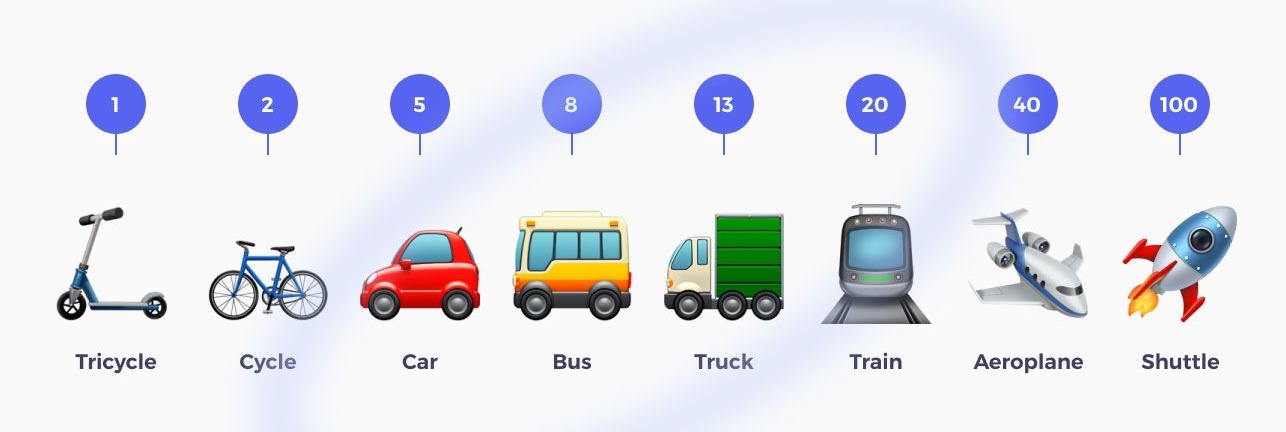 Planning Poker, Story Points, Fibonacci Numbers
Planning Poker, Story Points, Fibonacci Numbers
What metric is used to estimate with planning poker?
Answer: Story Points are the metric used to estimate with Planning Poker. It is a unit of measure that combines factors like complexity, effort, and uncertainty associated with a user story or task in agile development.
What is Story Points Fibonacci?
Answer: Story Points Fibonacci refers to the practice of using the Fibonacci sequence (1, 2, 3, 5, 8, 13, 21, 34, etc.) as the set of values for estimating the effort or complexity of user stories during Planning Poker in agile development.
What is Planning Poker Fibonacci?
Answer: Planning Poker Fibonacci is a method of agile estimation that involves using the Fibonacci sequence (1, 2, 3, 5, 8, 13, 21, 34, etc.) as the set of values on estimation cards to collectively estimate the effort or complexity of user stories during sprint planning.
You are a product owner estimating some user stories with your team. Using the Planning Poker™ method of estimation, you notice one of your team members has chosen the coffee card as part of their estimation. What does this typically mean?
Answer: Choosing the coffee card during Planning Poker is often used as a humorous way for a team member to indicate that they need a break or feel uncertain about the estimate. It signals the need for a brief pause in the estimation process to allow for clarification or discussion before proceeding.
Recap for Scrum Planning Poker
Scrum Planning Poker is a collaborative and engaging agile estimation technique designed to facilitate accurate and efficient sprint planning within the Scrum framework. This method involves team members using a set of Planning Poker cards, typically featuring values from the Fibonacci sequence, to collectively estimate the effort or complexity of user stories in the product backlog. The process begins with the presentation of a backlog item, followed by team members individually selecting and revealing their estimates simultaneously using the Planning Poker cards. The team then engages in a discussion to address any disparities in estimates, aiming to achieve a consensus on the effort required for each task.
Fibonacci Story Points, with values like 1, 2, 3, 5, 8, 13, and so forth, are commonly employed in Scrum Planning Poker to capture the non-linear nature of estimating complexity. This sequence acknowledges that as tasks become larger or more intricate, the associated uncertainty in estimation also grows. The agile metric known as Story Points is used to quantify the combined factors of complexity, effort, and uncertainty during the estimation process.
Planning Poker Fibonacci, synonymous with Scrum Planning Poker, has become a widely adopted and effective practice in agile development. It promotes team collaboration, minimizes biases in estimation, and enhances overall transparency in the sprint planning process. Team members often find the use of Planning Poker cards, including humorous choices like the coffee card for indicating uncertainty, to be a dynamic and interactive way to ensure accurate estimations and successful sprint planning sessions. As an integral part of agile methodologies, Scrum Planning Poker continues to empower teams to deliver high-quality products with precision and efficiency.
Share It With Your Colleagues and Friends to Help Them Learn:
Scrum Planning Poker: Best Estimation Method for Agile Teams
|
|

|

|

|

|
|
 SCRUM INSTITUTE™
SCRUM INSTITUTE™



